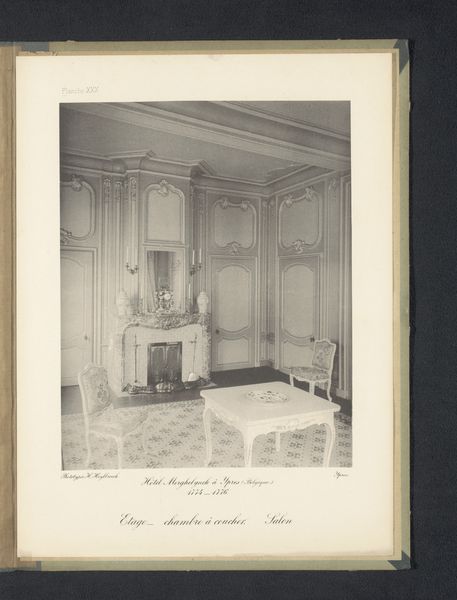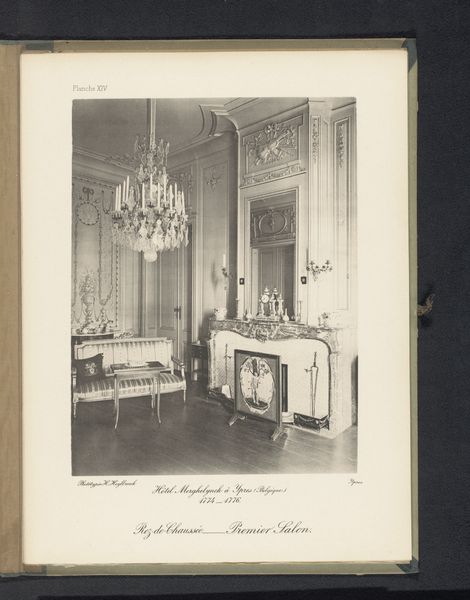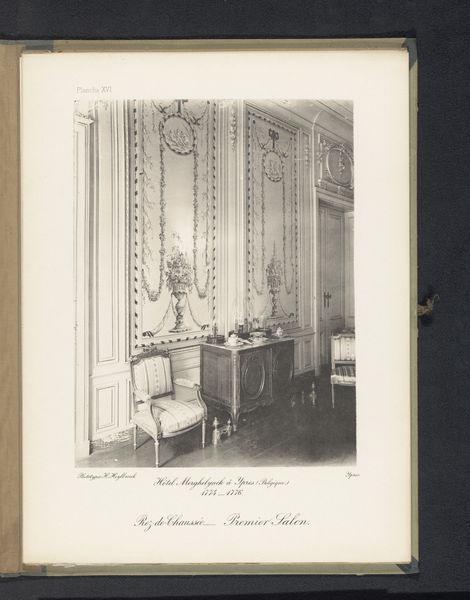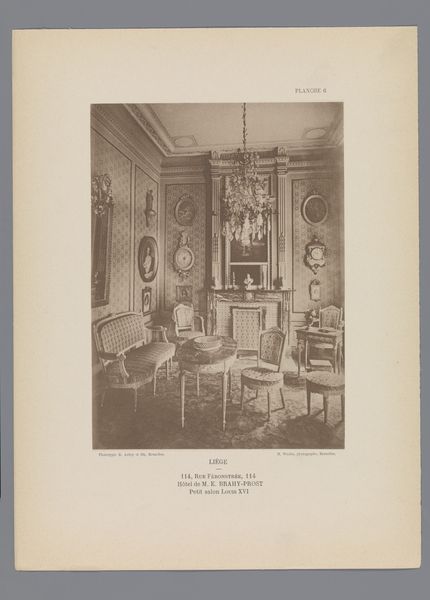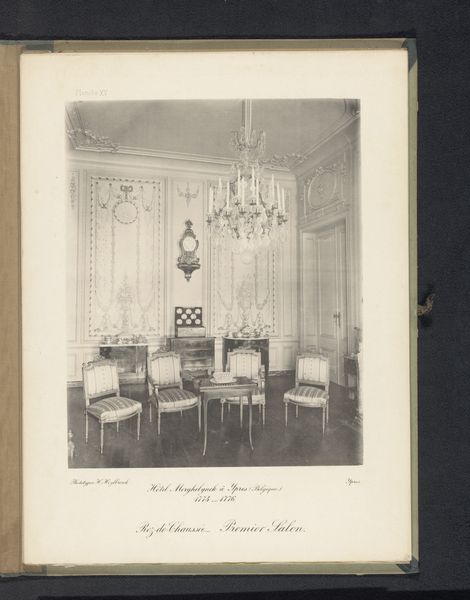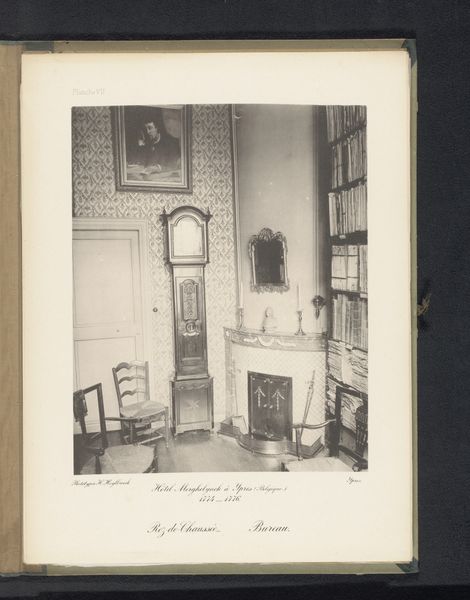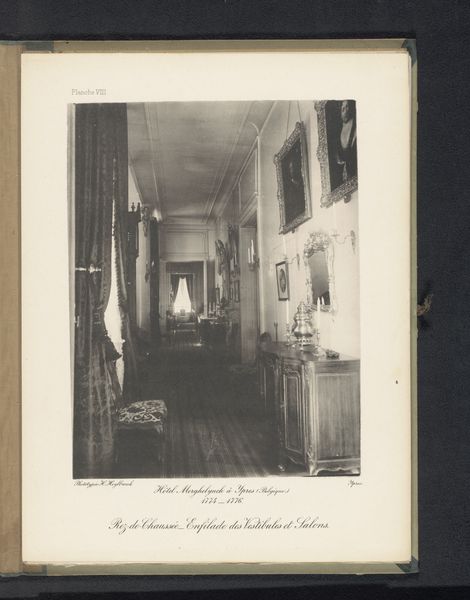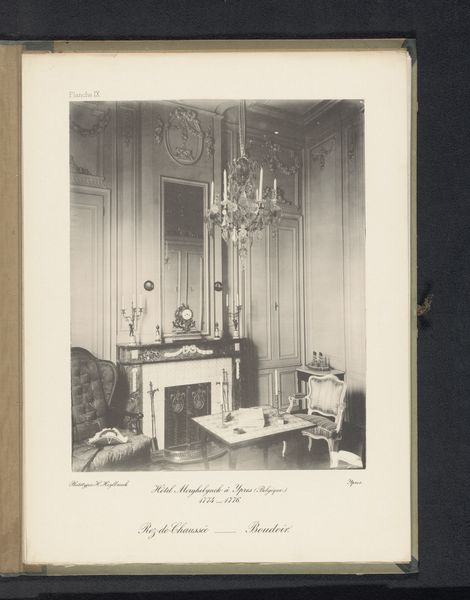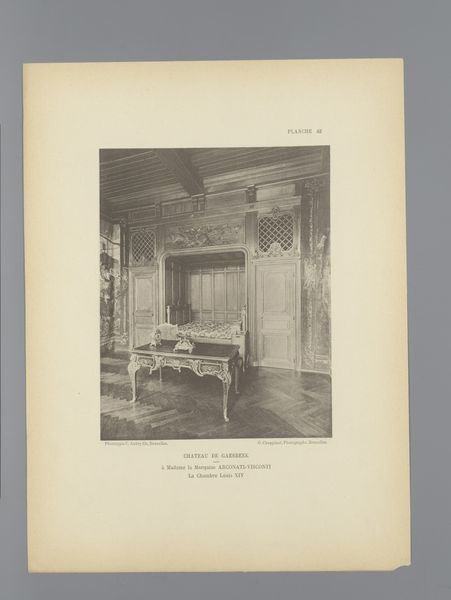
Eetkamer op de begane grond van Hotel Merghelynck in Ieper, België before 1894
0:00
0:00
photography
#
photography
#
genre-painting
#
realism
Dimensions: height 272 mm, width 214 mm
Copyright: Rijks Museum: Open Domain
Curator: Before us we have a photograph taken by Hector Heylbroeck, titled "Eetkamer op de begane grond van Hotel Merghelynck in Ieper, België", placing us inside a dining room of the Hotel Merghelynck in Ypres, sometime before 1894. Editor: Immediately, I’m struck by the stark contrast between the ornate architectural details and the stillness captured in the photograph. It almost feels like a stage set, waiting for actors. Curator: It is interesting how you observed the stage-like setting because Heylbroeck's photographic choices create more than just a snapshot of bourgeois domesticity; he's carefully presenting social codes and expectations tied to wealth and status of that specific region and era. Editor: Absolutely. Look at the craftsmanship apparent in everything from the chandelier to the chairs, it must have taken a great many workers to produce all this luxury, and not just make, but maintain it as well. The table looks ready to use, but something feels…unused about it all. Curator: Consider this image through the lens of labor, class, and consumption during this period of colonialism; even elements of Orientalism permeate within the aesthetic tastes on display within these affluent dining halls. How does Heylbroeck’s perspective influence our viewing of this moment in history? Editor: Well, that raises questions about who had access to photography and why Heylbroeck decided to capture this room. The image’s materiality as a photographic print tells us only a fragment of a wider reality. We don’t see the servants, or their labour. Just the silent space where food is consumed, or could be consumed, and commodities displayed. Curator: Precisely. These spaces tell intricate stories. These dining rooms were spaces where identities are negotiated and shaped through interactions of status and gender, all reinforced within the structural elements of capitalism. Editor: And looking again at how Heylbroeck has framed it, one has to acknowledge the value in freezing these settings. This one image leaves you with lingering questions. Curator: Indeed, these photographic echoes compel one to consider a larger sociopolitical picture as its backdrop, the silence pregnant with meanings from a bygone era.
Comments
No comments
Be the first to comment and join the conversation on the ultimate creative platform.


